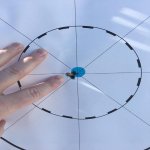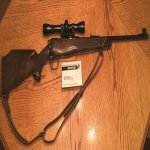Remember that even in the worst of the wartime rush, they were not let out of the factory if they grouped over 3 inches at 100. Generally, 2 inches was regarded as acceptable.
The 303 round was held to the FLATbased Mark VII bullet for many reasons, correct obturation being one of them. That is also why the (fairly quick) Cordite powder remained standard in British ammunition. Problems do arise with boat-tailed bullets because Enfield rifling is odd numbered and WIDE and DEEP. Stick with flatbase slugs. I load mine with Sierra Pro-Hunter 180s and have no troubles.
On a cut-down stock, a rest-point for the barrel will do a lot of good. It does not need to be 6 pounds, rather, just enough to keep the barrel from whipping around. You can even make one up with a couple wraps of masking tape.
TRIGGER CONTROL is a MUST. Use both steps: take up the slack, then SQUEEZE. Do not PULL, do not JERK, just SQUEEZE by tightening your hand. If the Trigger is adjusted correctly, that is all you will have to do.
SCREWS TIGHT but do not overtighten the Magpie Screw on a Number 1; use it to adjust vertical zero.
Slightly MILD loads are best. Try for 2250 ft/sec with a 180. I get that with just 37 grains of 4895. That is the actual by-test most accurate velocity for the 303 round with a 180 slug.
Enjoy!




















































 They called him "deadeye" after that performance.
They called him "deadeye" after that performance.























